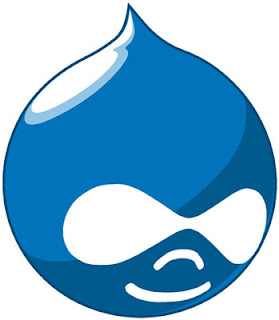
I have been working on a freelance project for the past four days. It's been a while since I was able to focus intensely on doing just one activity. The subject of my focus is the Content Management System (CMS) called Drupal.
Drupal is something that you can use to build entire websites. If you're familiar with working with blogging platforms such as Blogger (or Blogspot), Multiply, and Wordpress, then... That's how you work with Drupal pretty much. Only, Drupal is more powerful.
Pros
Powerful for Social Sites and e-Commerce sites
You can create an entire e-Commerce site, or a social networking site similar to Friendster. That's how powerful Drupal is. You don't have to be a master of HTML, PHP, or whatever (but of course, having a good foundation on these is a plus)
Free!
You can download Drupal for free from the Drupal Website. You'll need a compression utility such as WinZIP or WinRAR to extract the files. You'll have to extract them twice, that is, extract the *.gz file, then extract the *.tar file contained in the *.gz file. What you'll have to do is upload these files on your web hosting server (for my case, I use Hostgator). All the changes you will do will be done directly online.
Drupal, under the GNU license, will always be free!
A lot of people are helping it grow!
A lot of people are working on new modules for Drupal. You can think of them as add-ons. For example, there are e-Commerce modules, Content Creation and Formatiing modules, modules that allow you to have five star ratings for content, and so and and so forth. You can choose the ones you need and install them. These modules are also available for free.
Some things you should be aware about
Installation may not be that simple, but here's how
One thing about Drupal is that it may not be that simple for everyone to install it on their server. It's a plus if you're hosting the site on a web host with good customer support team who can help you with setting it up. I recommend Hostgator, or Godaddy.
Installing Drupal
First, download the latest version of Drupal here: Drupal Website. Use Winzip, or WinRAR, or 7-zip to extract the contents of the .gz file. The resulting file should be another compressed file with a .tar extension. Extract the files from the .tar file.
Upload the Drupal Files you've extracted
You'll need a web hosting service where you can upload your site. For my case, I use Hostgator. Now, upload the files you've extracted to Hostgator. If you are not familiar with where you should upload your website, ask the support team. If you're using hostgator, then you can upload it to the public_html folder. Of course, you can use the website file upload and do it one by one, but that'll take you a lot of time since there are a lot of files. Use an ftp client, something like Filezilla (which is FREE, by the way) .
Create the Database
Through the web hosting interface, there should be a MySQL Databases option. Go to this and create a database. Don't worry about the technical stuff, all you have to do is fill up the forms with the name you want the database to have. You should be able to create users as well. Nothing technical again, just fill in the forms. Then, there should be an option to connect the users to the database. In Hostgator, those are all done from the same page. Oh, and take note of the database names that you've assigned, as well as the user names and the passwords you assigned to them. You'll be using these information later.
That done, you can now access your website. For example, if your website is www.Website.com, then just type that in. You'll be shown to the Drupal installation. You should just follow the steps from there on. You might encounter a register_globals error, in which case, create a file called php.ini and type in the following:
register_globals = false
Upload this file to the folder containing your Drupal website.
This should do the trick and have your Drupal site up and running.
No comments:
Post a Comment